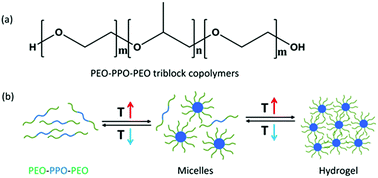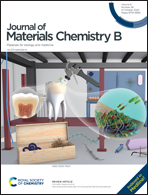In situ formation of injectable hydrogels for chronic wound healing
Abstract
Hydrogels have been widely used in wound healing treatment over the past decade. Injectable hydrogels have become a major research focus due to their unique advantages. Compared to traditional hydrogels, injectable hydrogels have good fluidity. When injected into the wound as a solution, they form a gel in situ that can fill the wound in three dimensions. This enables them to reach deep and irregular wounds that traditional hydrogels cannot fill. Injectable hydrogels greatly reduce the need for invasive surgery and are well-suited for chronic wound repair. This review article categorizes hydrogels that are commonly used in chronic wound repair according to their sources and reviews the current applications of the different types of injectable hydrogels in chronic wound repair.

- This article is part of the themed collection: Journal of Materials Chemistry B Recent Review Articles


 Please wait while we load your content...
Please wait while we load your content...